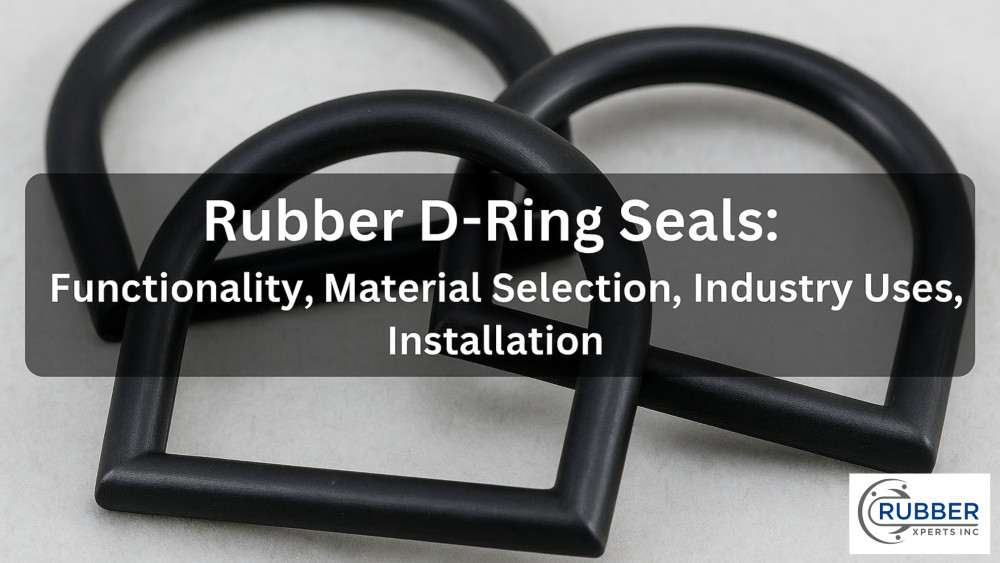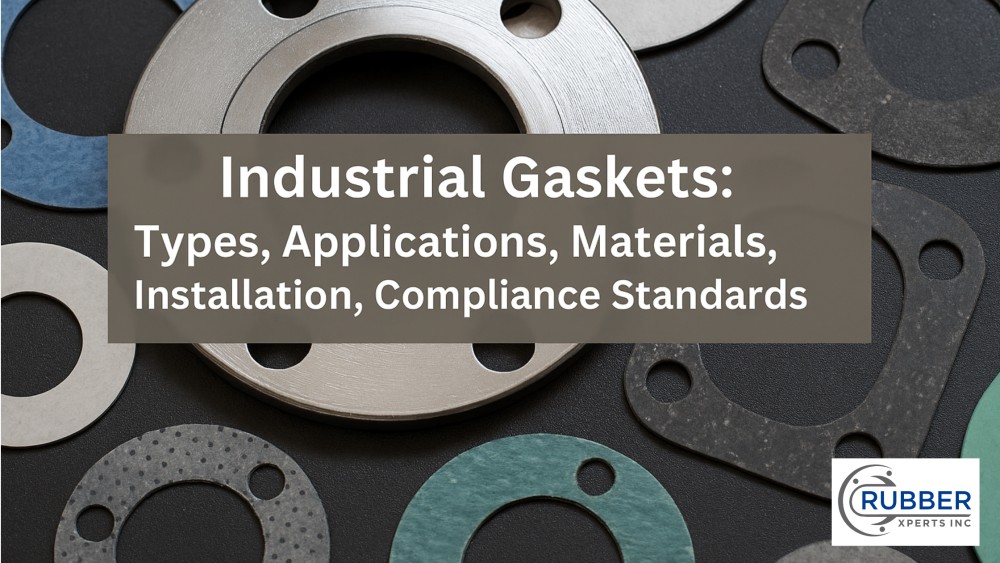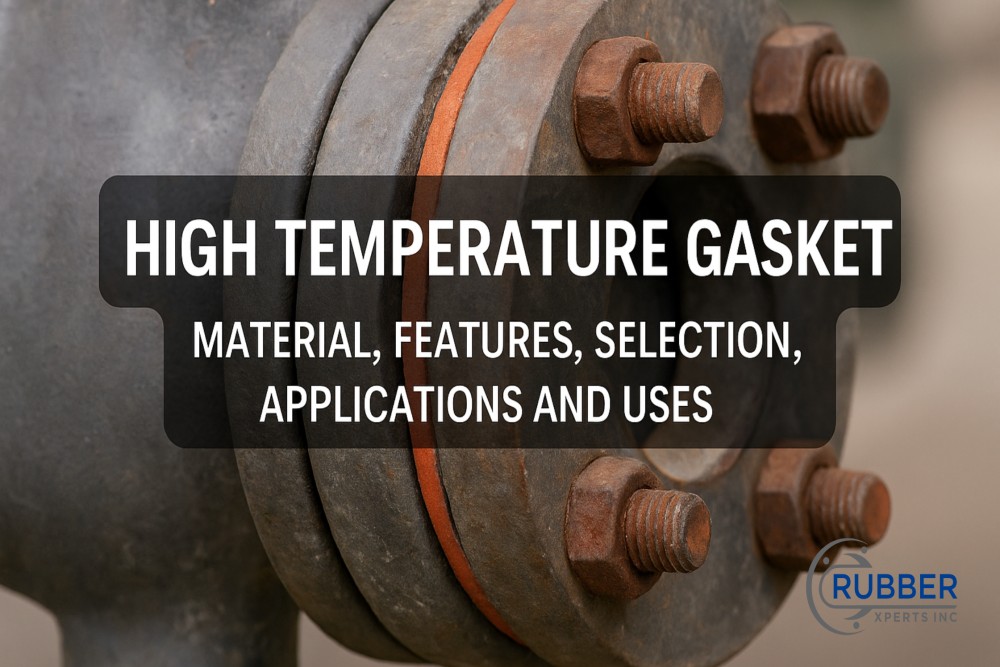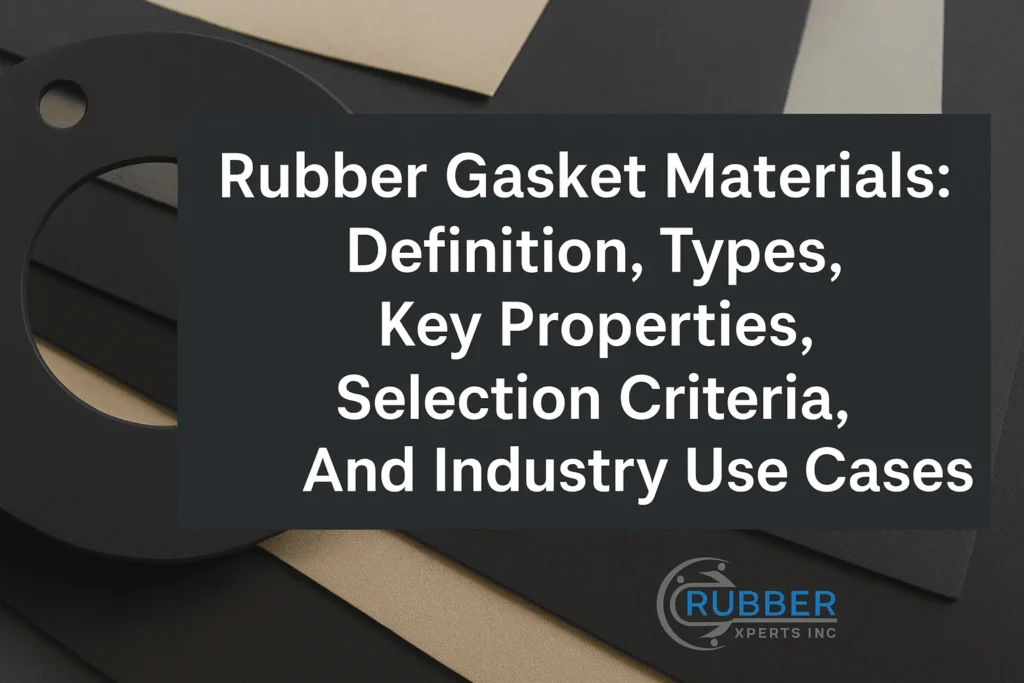People often use the terms “gasket” and “seal” rather interchangeably.
While they share the same function, which is to prevent leaks, they’re actually not the same.
And, if you forcibly use a seal as a gasket (or the other way around), there are some fatal consequences.
For instance, seals are ideal for sealing parts in engines or rotating parts.
Now, using gaskets for the same application can shorten your engine’s longevity, resulting in unwanted repair costs.
So, wherever you are in the industry, let’s find out the difference between rubber gaskets vs rubber seals!
What Is a Rubber Gasket?
A rubber gasket is a circular sealing device.
Similar to a rubber seal, gaskets are used to prevent leakage by fitting between components.
Gaskets are also known as “static seals,” and it’s common for people to mistake a gasket as a subcategory of seals.
Truth is, a gasket is mostly used to seal a union or a flange with flat surfaces to separate liquids.
A strong gasket depends on its material.
Whether it is Neoprene, Nitrile, Pure Gum Rubber, or EPDM Butyl, you can find the right rubber material for your industry by exploring our gasket catalog.
Aside from that, a rubber gasket is also an effective compressor and can withstand temperature or weather challenges.
What Is a Rubber Seal?
Unlike gaskets that are often used in static environments, seals are better solutions for engines or machines with frequent movements.
That’s why you’ll commonly find rubber seal applications in motors, pumps, rotary shafts, or engines.
Seal itself comprises broader categories, spanning from valve stem seals, mechanical seals, and rotary seals.
As you can see from the picture, a seal is circular and flat, with a ring of rubber in the middle that is surrounded by a metal outer.
Just like gaskets, seals are used to transport liquids between two parts without the instruction of contaminants and toxic particles.
Check out different types of rubber seals for your industry!
They play an important role in keeping your work environment safe from contaminants.
General Differences Between Gaskets and Seals
Now, let’s get into the differences between gaskets and seals so you can make more informed purchasing decisions.
If you don’t have much time or prefer skimming, here’s a table that summarizes the differences of the two:
| Gasket | Seal | |
| Use Case | Static Seal | Dynamic Seal |
| Shape | Cut into shapes | Flat and round |
| Product Ranges | More limited | Broader |
As we’ve touched on how gaskets vs seals differ in their use cases, now let’s find out how they compare in terms of shapes and product ranges.
Shape
A gasket is usually more rigid and cut in the shapes of the components for a perfect fit.
This is not always the case with seals, though.
They’re molded or machined products, and although still round and flat, they have an inner surface that is made of rubber.
The inner circle is usually tilted slightly, creating a lip that acts as a second barrier against any contaminant that manages to pass the first edge of the seal.
Its outer ring is a metal component for better protection.
Product Ranges
As we’ve also briefly discussed, a gasket is a type of seal, or more precisely, the “static” one.
A rubber seal itself, which is more “dynamic” than a regular basket, comes in different ranges:
- Conventional seals
- Rotary seals
- Mechanical seals
- Valve stem seals
- O-ring seals
- Liquid seals
However, this is not to say that there are limited types of gaskets.
In fact, just like seals, gaskets come in a variety of shapes, materials, and rubbers.
Applications of Gaskets and Seals
Despite the differences, gaskets and seals are used in a wide range of industries.
From pulp and paper and transportation to electric generation and pulp and paper, the use cases of these sealing devices are expansive.
In the medical field, a seal’s main job is to protect tubing, catheters, and IV bags from infection and contamination.
If you have an HVAC/R and HVAC system, installing an airtight seal will help keep the environment in its optimum condition: clean and dry.
Seals and gaskets are also excellent temperature absorbers.
The former, specifically, comes in handy in valves, pumps, and conveyors, protecting against heat and harsh chemicals.
Conclusion
Knowing the difference between a seal and a gasket will ensure that you won’t make a purchasing mistake.
There are a couple of aspects to consider when making the right investment.
It all comes back to the applications: which one should you go with, a static or a dynamic seal?
Then, think about the industry fit.
Some fields require more “dynamic” applications, while others are not.
For instance, if you’re working with engines frequently, let’s say you’re in the aerospace field… There’s more chance that you’ll need a seal rather than a gasket.
However, a gasket’s rigidness can be helpful, especially for flanges with flat surfaces.
This is because you can request to cut them in the desired shapes so they’ll fit perfectly in protecting components.
Now, whichever industry you’re working from, there’s always a need for rubber materials.
They keep your engines and machines operating smoothly, and this is where our solutions come in.
Contact us, and we’ll find the best rubber products for you.





